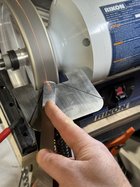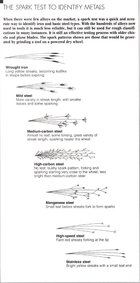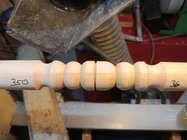I got a cheap set of turning tools for free to review through Amazon's Vine program, and the manufacturer's copy says the steel used is 4341 high speed steel. The tools themselves look like a Benjamin's Best knockoff set, but the steel is more coarsely-finished. Overall, the set was pretty much junk, but I'm curious about the steel. Google indicates that 4341 is a cheap Chinese high speed steel. It seemed very soft, though I don't know if that was the alloy or the heat treatment. I had some difficulty reshaping the spindle gouge because my 180 grit CBN wheel was removing material so quickly, a problem I've never had with M2 or better steels. But most curious was that this steel was throwing off a great deal of sparks, something I've never seen to this extent on a CBN wheel. Anyone else have experience with this steel?




